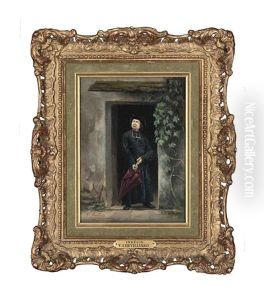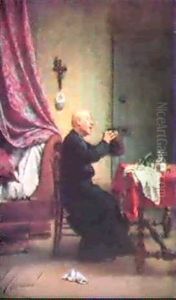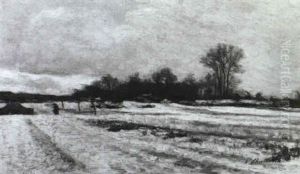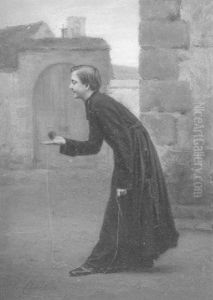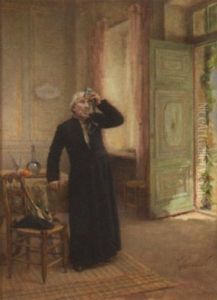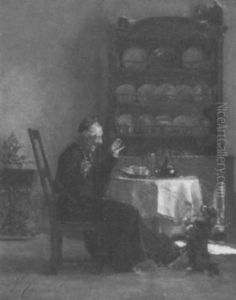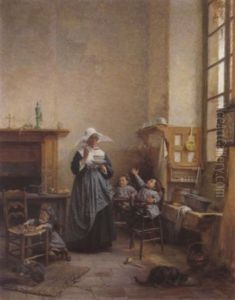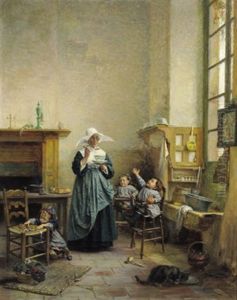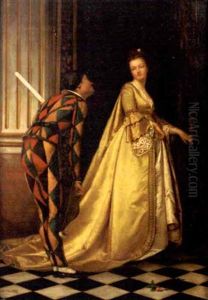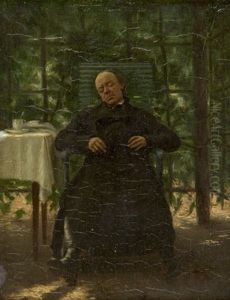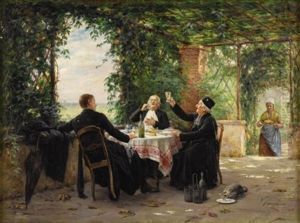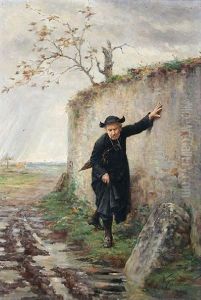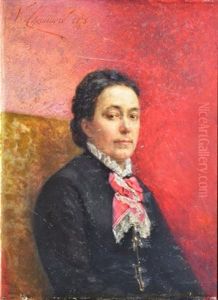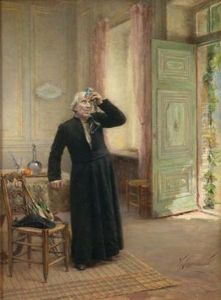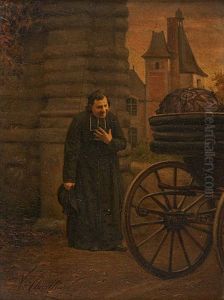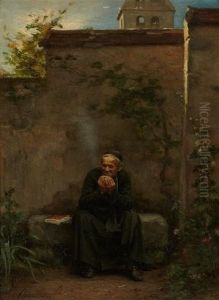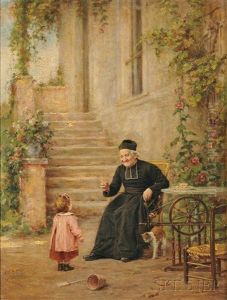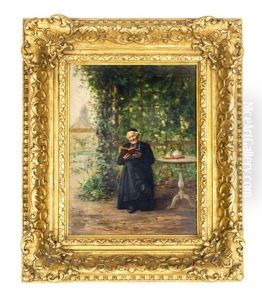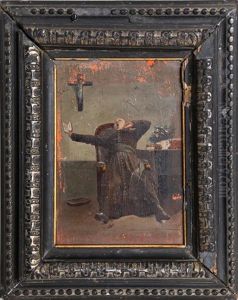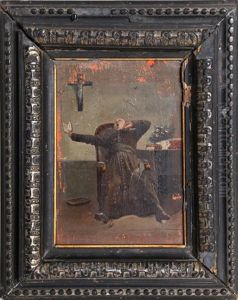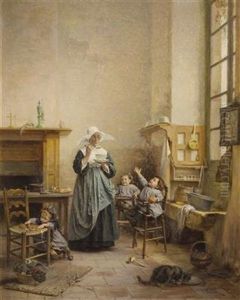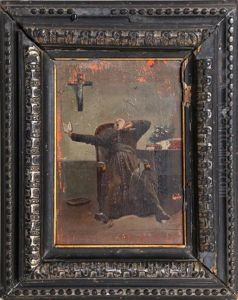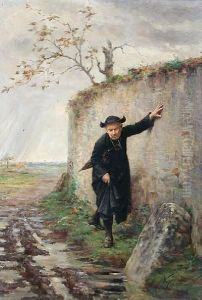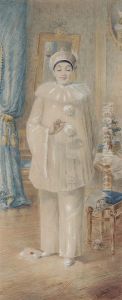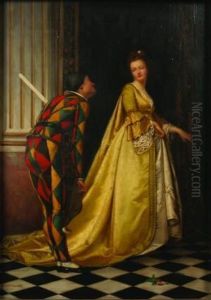Vincent J.-Baptiste Chevilliard Paintings
Vincent Jobard-Baptiste Chevilliard, known more commonly as Vincent Chevilliard, was a French painter born on October 20, 1841, in Paris, France. His artistic journey began under the tutelage of his father, who was also a painter. Chevilliard further honed his skills by studying at the École des Beaux-Arts in Paris, which was the premier art institution in France at the time, under the guidance of esteemed teachers such as François-Édouard Picot and Alexandre Cabanel. These academic influences were instrumental in shaping Chevilliard's classical painting style.
Chevilliard was known for his genre paintings, which often depicted scenes of everyday life with a particular focus on the interiors of bourgeois homes and their inhabitants. He was a keen observer of social customs and used his art to capture the nuances of French society during the Second Empire and early Third Republic. His work was characterized by a meticulous attention to detail, a rich color palette, and a refined technique that emphasized the textures of fabrics and the interplay of light and shadow.
Throughout his career, Vincent Chevilliard exhibited his works at the Paris Salon, the official art exhibition of the Académie des Beaux-Arts in Paris. He received critical acclaim and was awarded medals for his submissions, contributing to his reputation as a respected artist of his time. Chevilliard's paintings were collected by art connoisseurs in France and abroad, and he was commissioned to create works for private patrons and public institutions.
Despite his success, Chevilliard's life and work are not as widely known today as those of some of his contemporaries. Nevertheless, his paintings remain a valuable record of the cultural and social milieu of 19th-century France. Vincent Chevilliard passed away on May 15, 1904, in Paris. His legacy endures through his contributions to French art, and his paintings can be found in museums and private collections around the world.
